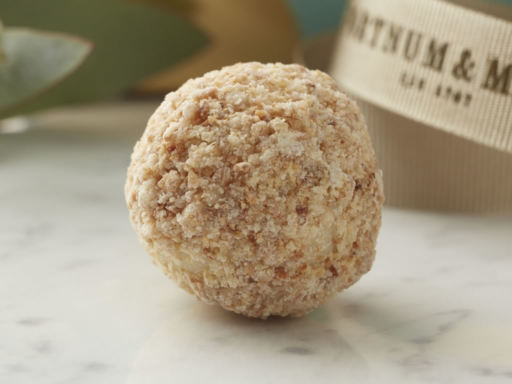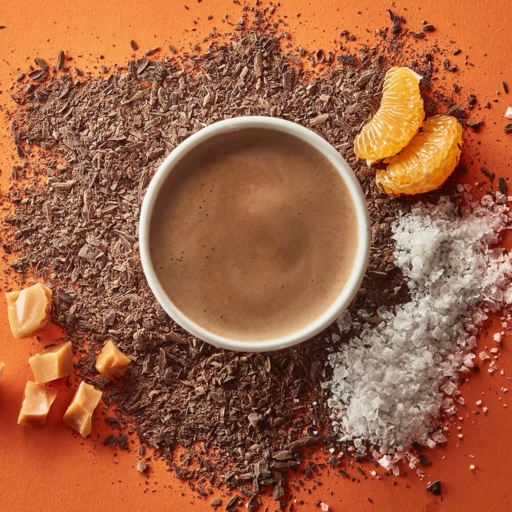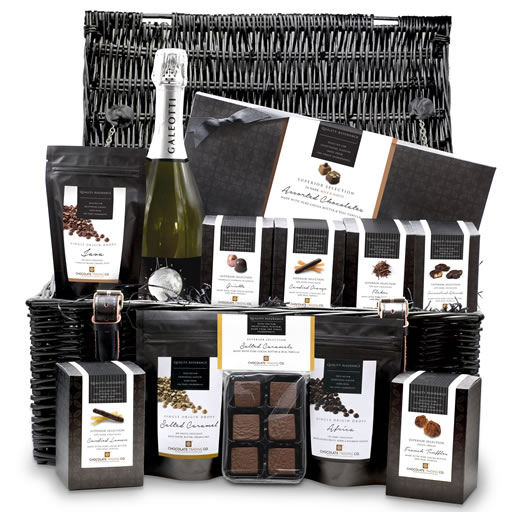I love talking to passionate chocolate producers. Their enthusiasm, care, and love for their products is always abundantly clear to see, and their enthusiasm is infectious.
This was exactly the case when I enjoyed a lengthy discussion with Ana from the Portuguese company Chocolataria Equador at the Speciality Food Fair in London.

I was captivated by the story of Chocolataria Equador, and left London desperate to visit the flagship store in Porto and their plantation in São Tomé and Príncipe. I was also kindly sent home with a variety of their bean-to-bar slabs to taste and review, which you'll find further down this page.
In this article:
Who is Chocolataria Equador?
Admittedly, this was my first question too. I hadn't heard of Cacao Equador - Roça de Santo António, Lda before, so I was keen to learn about the brand.
Graphic designers Teresa Almeida and Celestino Fonseca started the business back in 2009, in a desire to follow their passion for chocolate. It's by no mistake that the packaging and retail experiences immerse you in a creative world.
It turns out this Portuguese seed-to-bar company has its own 70 hectare plantation, Roça de Santo António, in the Abade river valley, São Tomé. It also receives cacao from selected producers across São Tomé and Príncipe.
This affords the company complete control over its product, from cacao plants through to the finished bars. The cacao bean processing, fermentation, and drying stages take place in São Tomé, while the chocolate factory in Porto handles the bean-to-bar process.
Chocolataria Equador has outlets in Porto, Lisbon, and Coimbra in Portugal, Girona and Barcelona in Spain, and most surprisingly of all, Doha in Qatar. Perhaps the most interesting fact about the latter location - which hit a staggering 49° Celsius earlier this year - is that the company is able to control the temperature right along the journey to the Gulf to ensure the chocolate lands on the shelves in Doha in the same condition it leaves the Porto factory. Meanwhile, I struggled to protect the bars from the heat of the London Underground network.
Take a look on Google Maps and you'll see their retail locations boast charm and character, designed to feel like you've stepped back to the 1940s or 1950s. From red brick walls, arches and mosaic tiled floors through to the wooden furniture, it all adds to the captivating retail experience, as does the beautiful packaging. It's clear to see that Teresa and Celestino have found a way to combine their love of quality chocolate with their love for design and storytelling.
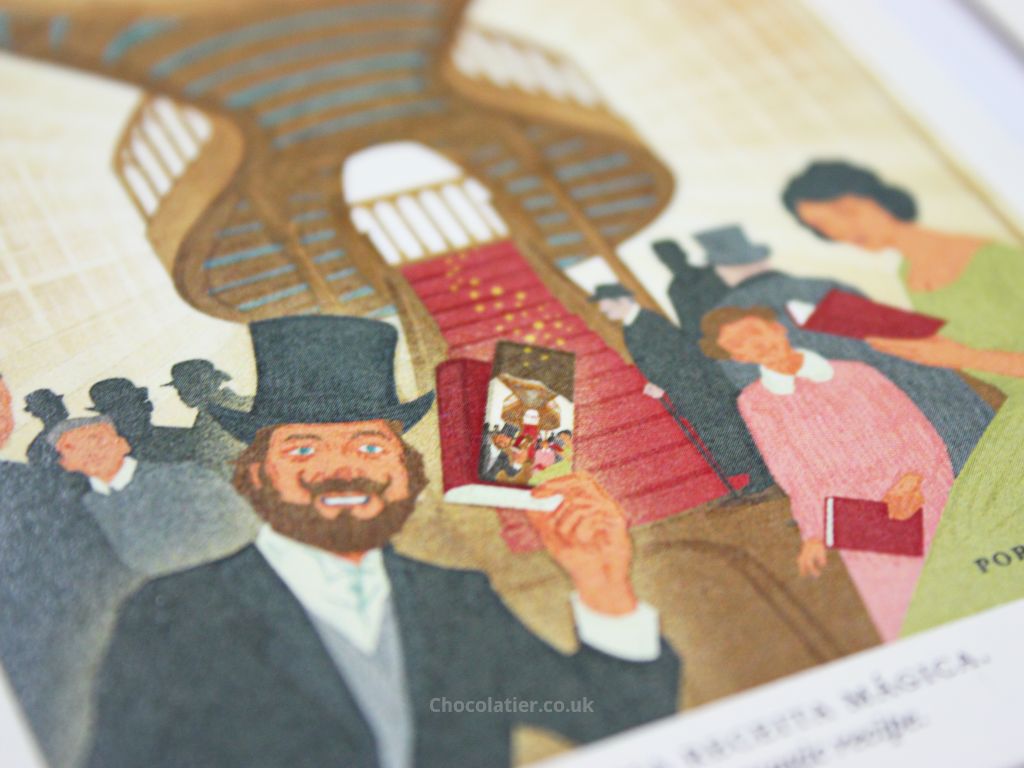
Right now, the company is seeking a UK distributor so you won't find it on British department store shelves just yet, but you can order chocolates, nibs, and even whole roasted cacao beans via their website. You'll also find their chocolate at Livraria Lello, Porto's beautiful bookshop made so famous by the Harry Potter stories, you now need to buy a voucher just to get inside! In fact, bespoke packaging has been created for these bars, including artwork of that famous sweeping staircase.
Bean-to-Bar Chocolate Bar Tasting Experience
The company produces a variety of chocolate bars in flavours from hazelnut or lemon, to orange or mango, and even curry! I have it on good authority that the Dark chocolate with Porto Wine bar is a bestseller.
It also produces a range of 30g and 100g hand-wrapped chocolate bars, made using the beans from the São Tomé plantation, ranging from a 52% milk chocolate up to 100% dark chocolate bar. The bars are produced using Amelonado cocoa, which is described as having a rich chocolate flavour, with hints of strawberry, almond, and woodiness in the tasting profile.
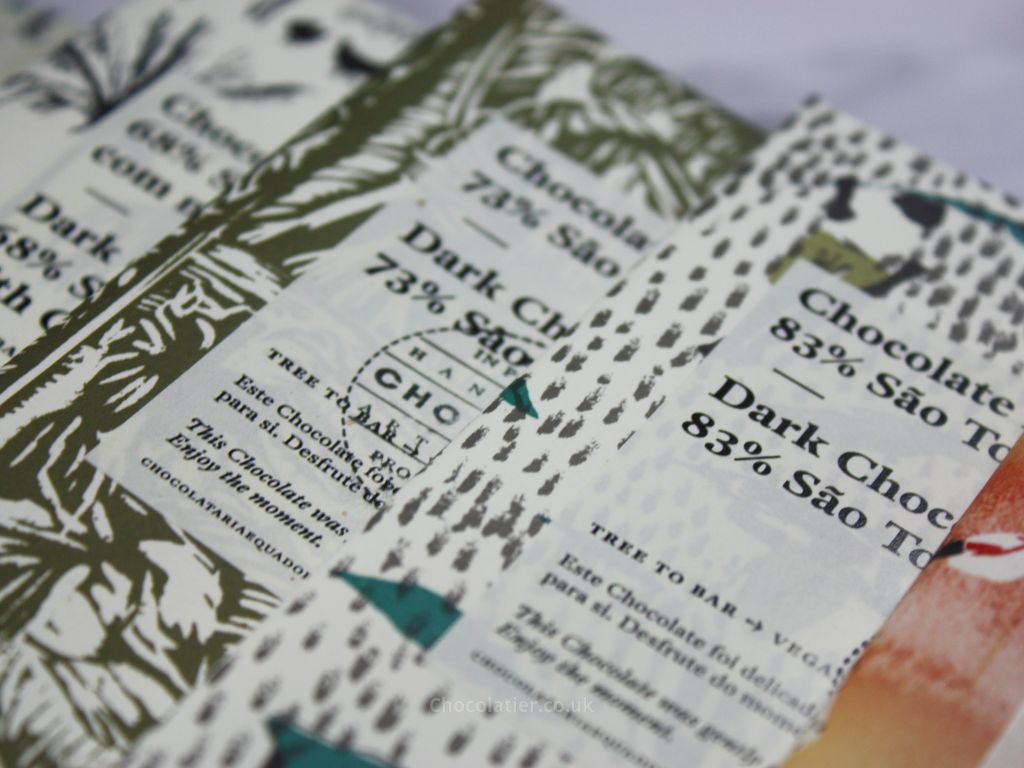
Ana from Chocolataria Equador kindly sent me home with the complete range of the five bean-to-bar slabs, and I thought it would be a fun to compare and contrast them here on Chocolatier.co.uk.
And so I began my Chocolataria Equador São Tomé chocolate tasting experience. The direction of tasting (lowest to highest cocoa percentage or vice versa) is a hotly contested debate in the industry, but I prefer to work from darkest to lightest, on the basis that I can better understand the 100% variety and can then see how that compares to the varying lower percentages. Should you fancy conducting your own chocolate tasting experience (and I urge you to do so as it's great fun), go in whichever direction makes you feel happiest. Chocolate is, after all, about the enjoyment.
Similarities
The tall 100g bars all come hand-wrapped in thick, printed craft paper jackets, each with a different design. Each features a product label sticker with 'Made in Portugal' hand stamped on top. Beneath the paper outer is an aluminium foil wrapper that protects the chocolate as well as a rectangular piece of cardboard to further insulate from knocks and bumps.
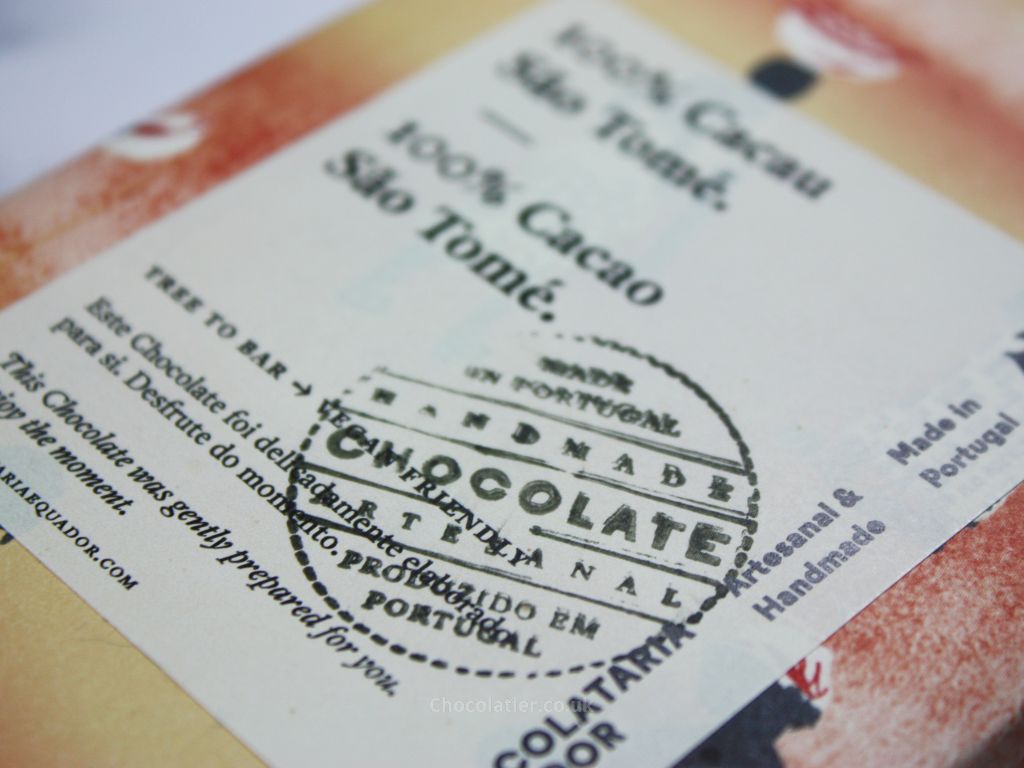
The rear of the bars all feature a long rectangular sticker with the ingredients list and nutritional information in Portuguese, English, Spanish, and Catalan.
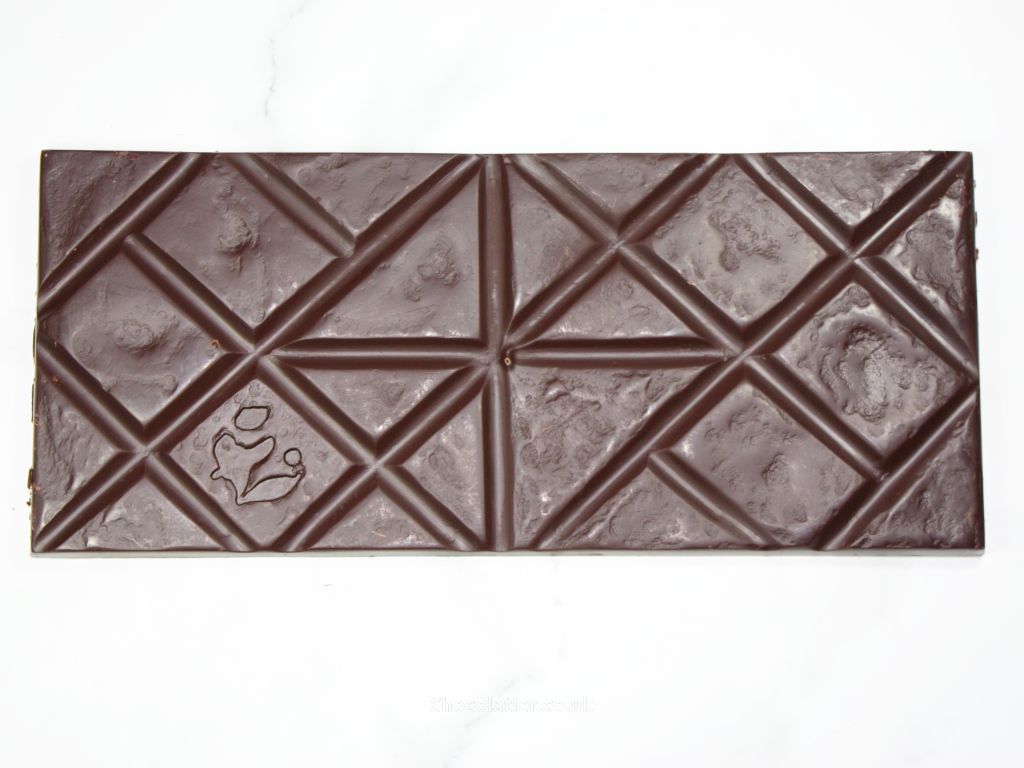
The mould used mixes rectangles and triangles so you can divide it into lots of different and interesting shapes. The Chocolataria Equador 'E' moniker sits on one segment, while the others have a pattern that reminds me of textured floor or wall tiles.
Each bar had a clean snap, and easily broke into pieces following the grooves imprinted on the slabs.
1 Chocolataria Equador 100% São Tomé Dark Chocolate
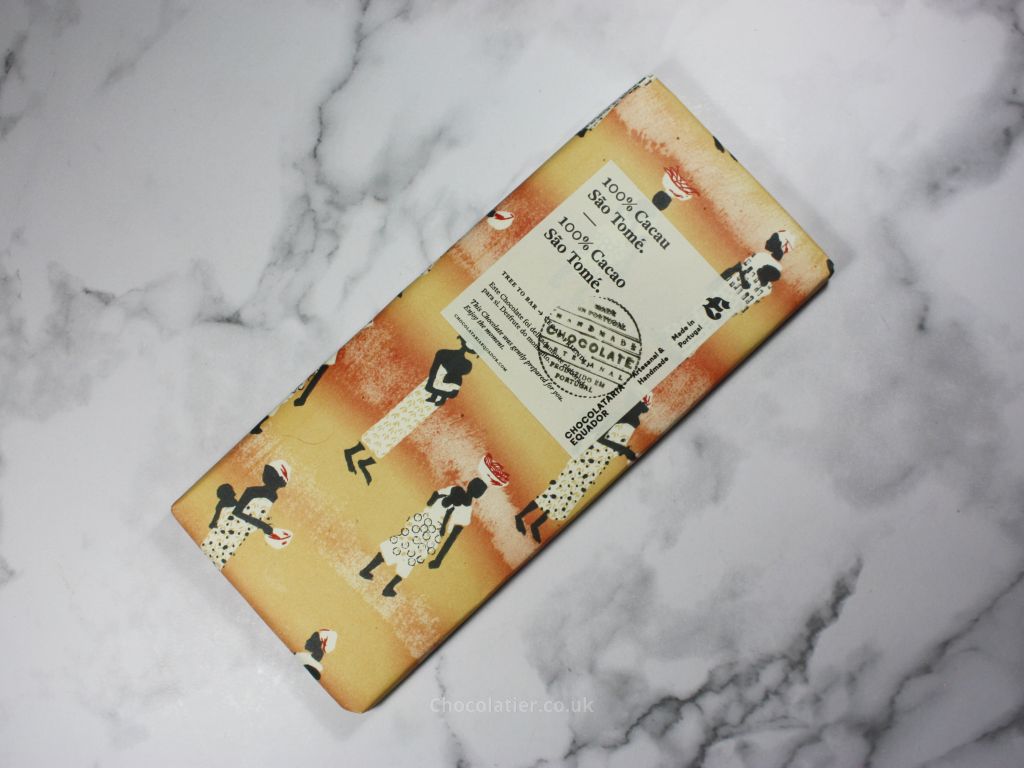
This vegan-friendly tree-to-bar slab comes wrapped in an pale yellow and red wrapper with decorations of mothers baking and women carrying goods in baskets upon their heads.
Chocolataria Equador 100% São Tomé Dark Chocolate ingredients:
Cacao beans; cacao butter. Cocoa solids 100% minimum.
The bar contains 598 kcal per 100g and comprises of just 0.3% sugars.

- What they say: Pure cacao mass where the bitterness and sourness are well balanced.
- What I say: I picked up a rich and earthy aroma, with a subtle hint of smokiness. Upon tasting, there was a dry, bitter edge to begin, alongside a hint of nuttiness as the chocolate began to melt. An intense rush of earthy notes, with a subtle hint of coffee notes, burst onto the scene as the bitterness intensified. Mid-way, a tiny glimmer of sweetness interjected itself into the taste. A gentle creaminess filtered through at the end, leaving a bitter long-lasting aftertaste.
- Verdict: A bitter, intense chocolate bar that was born to be nibbled upon. Its dry, earthy, and smokey characteristics meant it was best paired with a sweet fruity beverage to balance out the flavours.
2 Chocolataria Equador 83% São Tomé Dark Chocolate
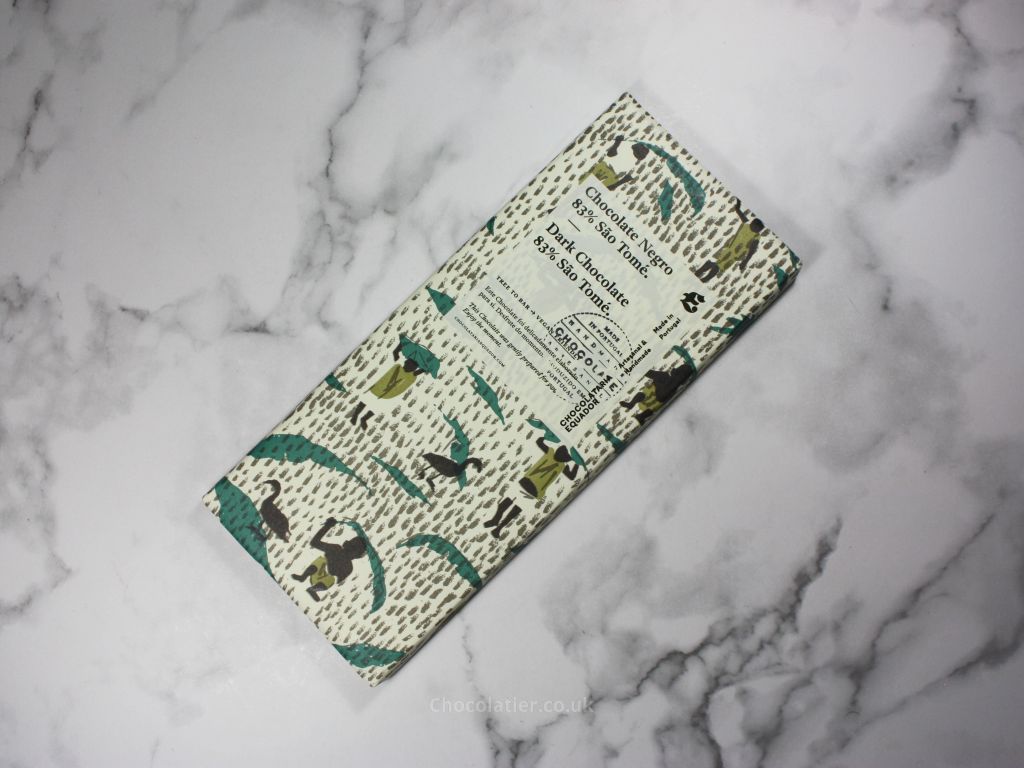
Blue and green bursts of colour depicting ducks and children taking shelter under giant leaves decorate this white and grey bar. Again, like the 100% bar, it too is a vegan-friendly tree-to-bar slab.
Chocolataria Equador 83% São Tomé Dark Chocolate ingredients:
Cacao beans; cacao butter, unrefined cane sugar, Madagascar vanilla pod. Cocoa solids 83% minimum.
This bar contains 590 kcal per 100g and comprises of 15.5% sugars.

- What they say: Strong and balanced flavour, with hints of rum, plum, prune, raisin, and molasses.
- What I say: The initial aroma of this bar was a lot lighter and fruitier than the 100%, and I picked up notes of plum, raisin, and prune. The taste, for me, was far more welcoming, with nutty, fudge-like notes centre stage against a mildly bitter and smokey backdrop. The texture was creamier and altogether more rounded, with a smokey bitterness moving in during the aftertaste.
- Verdict: It was surprising to see the substantial impact the addition of a small quantity of cane sugar and vanilla had on this bar. By comparison to the 100% which was dark and broody, this 83% bar seemed more fun and lively, with just a hint of that sombre characteristic.
3 Chocolataria Equador 73% São Tomé Dark Chocolate

A busy olive green image covers the 73% vegan-friendly tree-to-bar slab. It looks to me like a jungle or plantation, and I think I can make out the outlines of people hidden in the image.
Chocolataria Equador 73% São Tomé Dark Chocolate ingredients:
Cacao beans; cacao butter, unrefined cane sugar, Madagascar vanilla pod. Cocoa solids 73% minimum.
The bar contains 579 kcal per 100g and comprises of 24.5% sugars.
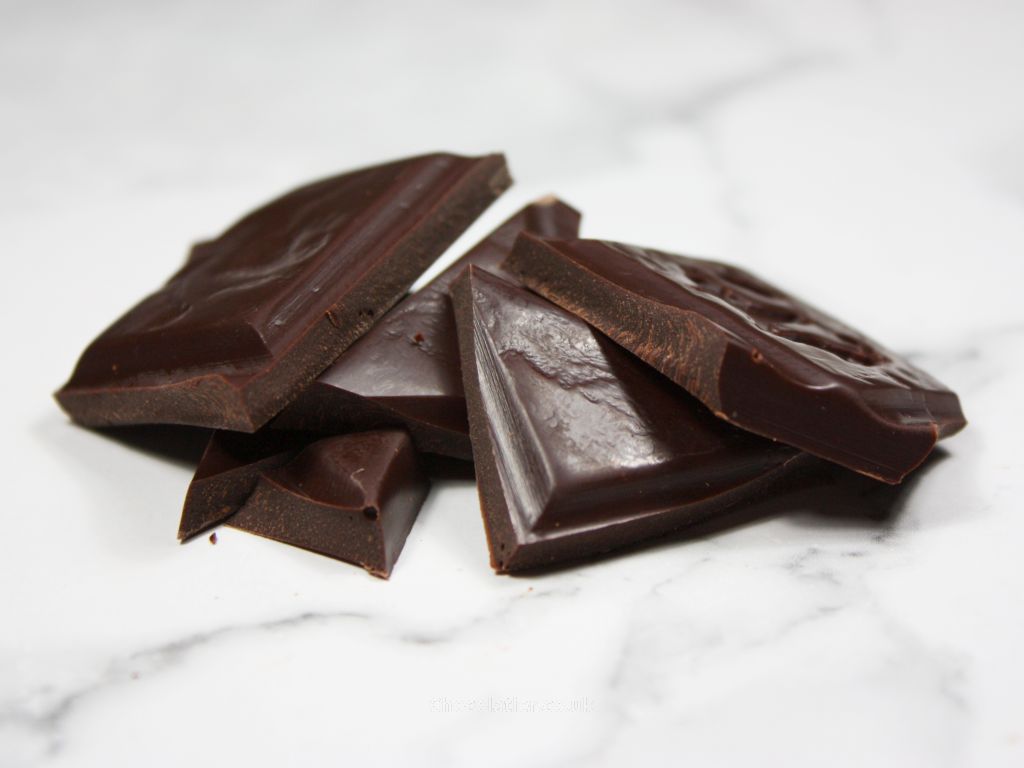
- What they say: Strong and complex with notes of tobacco, almond, honey, prune, and vanilla.
- What I say: The initial aroma of the 73% bar was similar to the 83% bar, but considerably more delicate. While there were subtle hints of plum, raisin, and prune, sweeter notes of fudge, honey, and vanilla augmented the perfume from this bar. Nearly a quarter of this bar comprised of sugars and that sweetness paired incredibly well with the rich, smokey cocoa to counteract the bitterness. There was still a hint of a bitter edge, but I liked that dynamic. The honey, coffee, and nutty notes of the cocoa were teased out in this bar. The finish was smooth and rounded, with a lovely rich cocoa flavour, rather reminiscent of that of a dense chocolate brownie.
- Verdict: While the 100% bar highlighted the raw properties of the cacao, and the 83% bar introduced a hint of sweetness, the 73% bar had enough sweetness to control the bitter quality of the cacao.
4 Chocolataria Equador 68% São Tomé Dark Chocolate with Cocoa Nibs
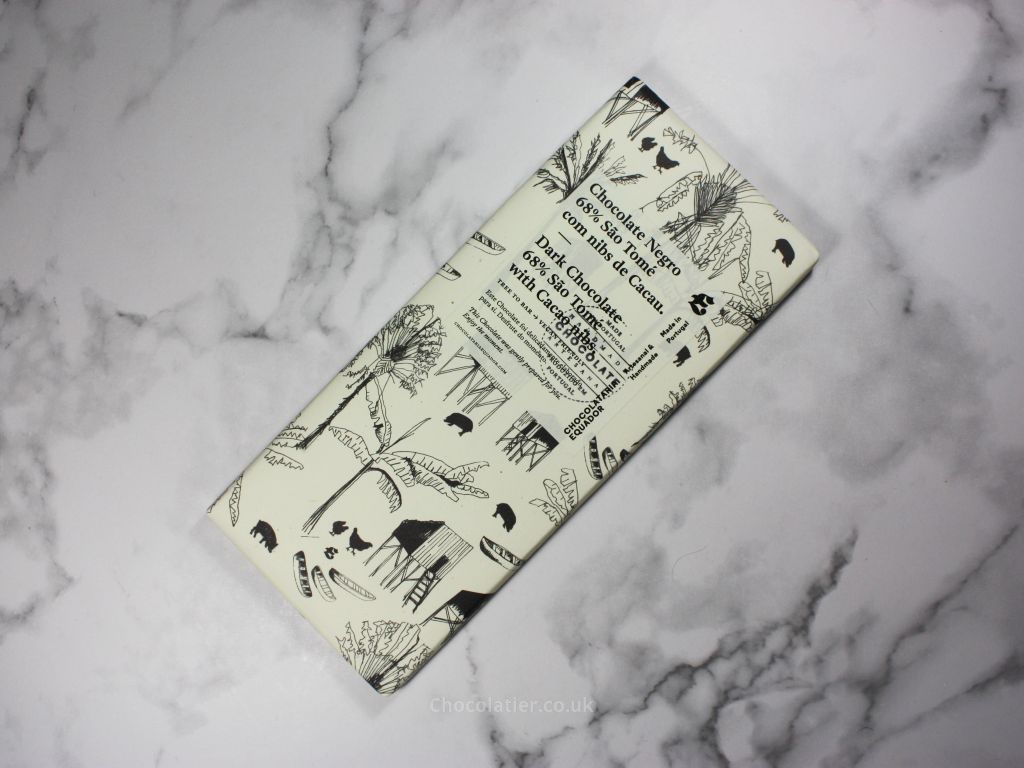
I love the penmanship on the hand-drawn design used for the wrapper of the 68% vegan-friendly tree-to-bar slab. Chickens, pigs, canoes and trees cover the front of this packaging.
Chocolataria Equador 68% São Tomé Dark Chocolate with Cocoa Nibs ingredients:
Cacao beans; cacao butter, unrefined cane sugar, Madagascar vanilla pod. Cocoa solids 68% minimum.
The bar contains 554 kcal per 100g and comprises of 39.4% sugars.
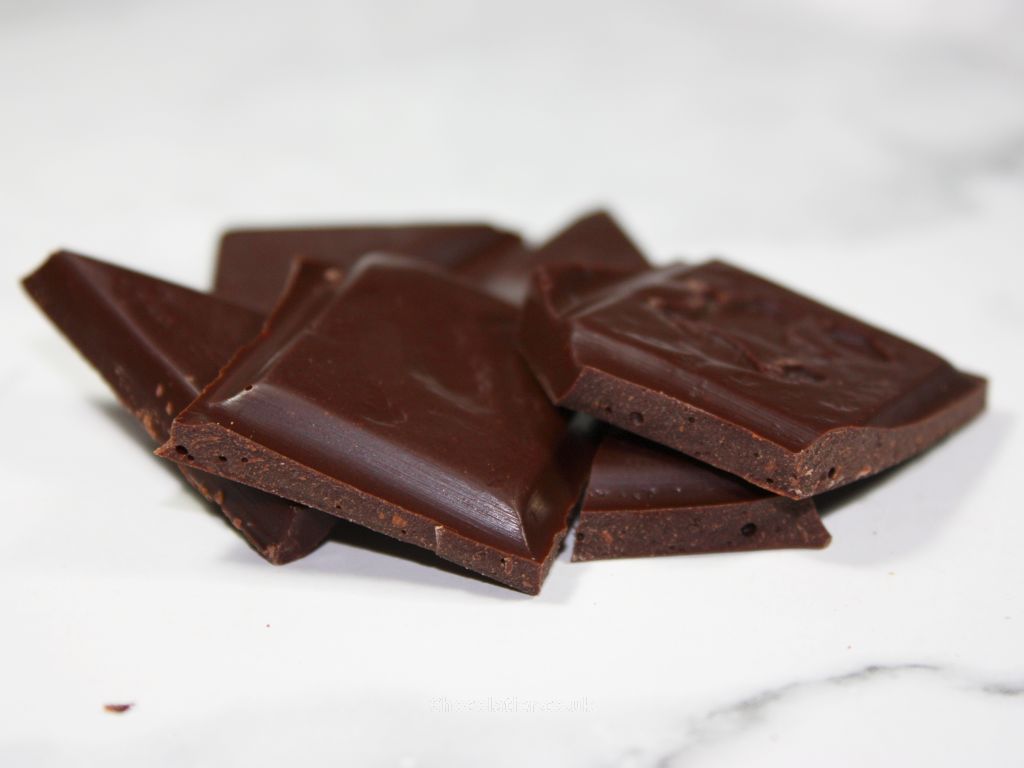
- What they say: Complex, with notes of coffee, tobacco, prune, strawberry, and molasses.
- What I say: The initial aroma of the 68% bar was weaker still, with smokey aromas of tobacco and molasses, but also an almond-like edge to it. The taste was sweet, with familiar honey, coffee, and nut notes. Crunch was provided by fine flecks of crushed cocoa nib, which added texture and a glimpse of extra depth of flavour. The finish was rounded, with a brief creamy cocoa flavour in the aftertaste which quickly vanished.
- Verdict: The 68% bar was a delicate blend, with hardly any bitterness that came through, although the smokier notes were still detectable. I liked the crunch of the cocoa nibs but felt the 68% blend wasn't robust enough to let the dainty fragments of cocoa nib shine to their fullest.
5 Chocolataria Equador 52% São Tomé Milk Chocolate
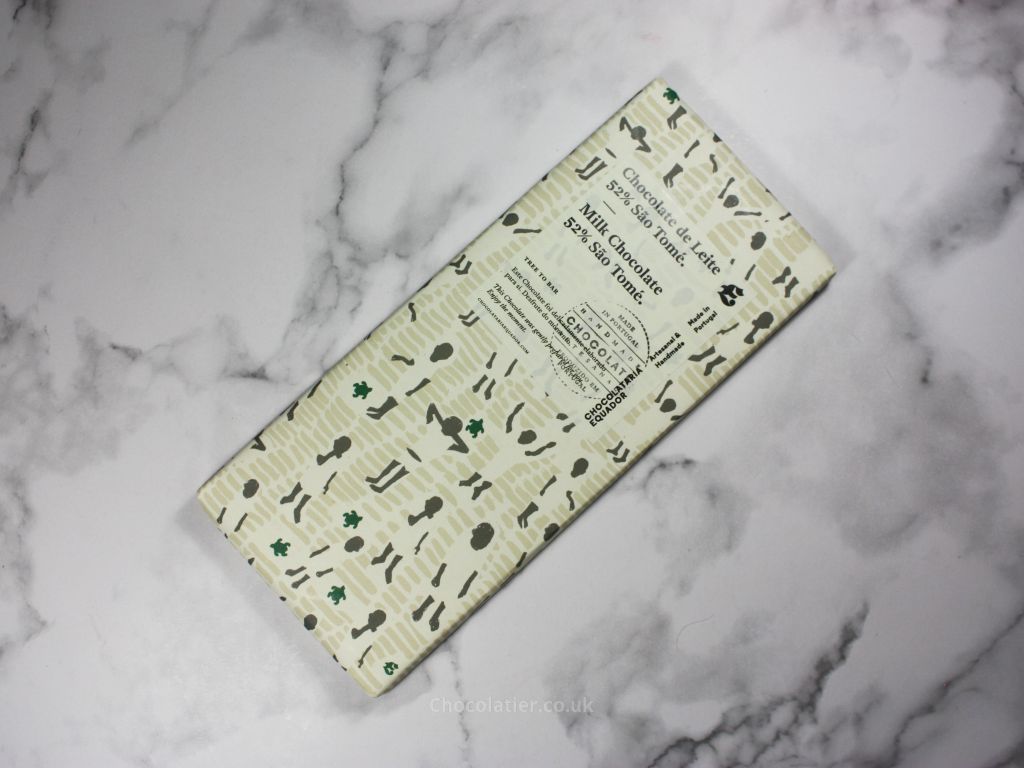
The only non-vegan bar in my selection is this 52% tree-to-bar São Tomé milk chocolate and its packaging features children and green turtles against a beige background.
Chocolataria Equador 52% São Tomé Milk Chocolate ingredients:
Cacao beans; cacao butter, Azores whole milk powder, unrefined cane sugar, emulsifier (sunflower lecithin), Madagascar vanilla pod, sea salt. Cocoa solids 50% minimum; Milk solids 21.8% minimum.
The bar contains 506 kcal per 100g and comprises of 44.2% sugars.
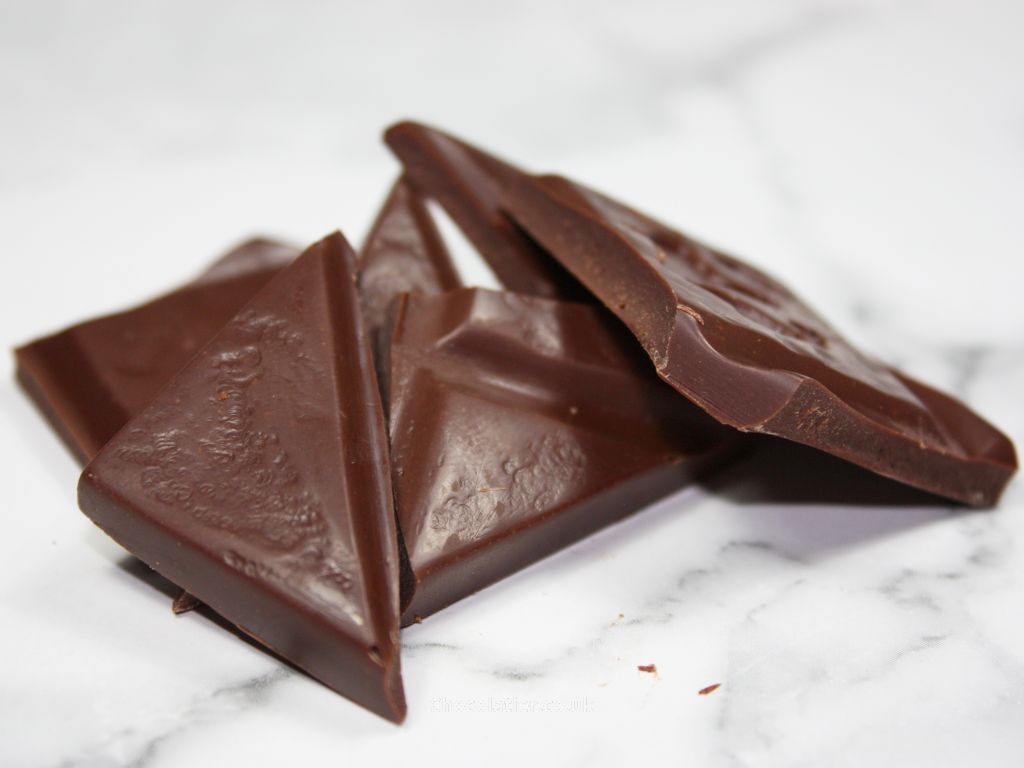
- What they say: High percentage cacao with hints of caramel, molasses, and rum.
- What I say: The aroma of this bar was very lively, with heaps of creaminess at the forefront. Hints of buttered popcorn sat alongside notes of butterscotch and light caramel. The creaminess was the first property to coat my mouth as I tasted this bar. The light caramel flavours came through next, before a gentle bitter twist in the middle, finishing on a very sweet high. The aftertaste was also very sweet, with a bitter edge to it. So much so, I craved something savoury afterwards to bring my senses back down to earth.
- Verdict: I preferred the flavour of the darker bars, but loved the comforting mouth feel of this creamy milk chocolate bar. The sweetness dominated this bar, and the smokey flavours of the cocoa were undetectable as a consequence.
When I met Chocolataria Equador at the Speciality Food Fair, I enjoyed some samples and branded the 73% bar as my favourite from the range. I also loved the crunch from the the cocoa nibs in the 68% bar and suggested the nibs be added to the 73% bar too.
Having tasted the chocolates again at home, I stand by this. For me, the 100% is a flavourful bar but very intense, making it ideal for snacking on in small quantities. The 83% bar balances out some of the bitterness but for me, the 73% is where perfection lives.
While the crunch of the 68% bar was lovely, and the 52% was sweet and creamy, they were both easily demolished in the blink of an eye. The 73%, 83%, and 100% bars are ideal for savouring over a long time, and are a much better demonstration of the individual characteristics of the São Tomé cocoa.
Want to try some? You can order chocolates, nibs, and even whole roasted cacao beans via their website.
Chocolataria Equador São Tomé Chocolate Bars Review
RRP: £7.00 | Chocolataria Equador | Shop now
A fascinating flight through clean-tasting bean-to-bar chocolate from Portugal, experiencing how different cocoa percentages can have a massive impact on the final bar. The São Tomé cocoa has bitter, smokey, and earthy characteristics and the 73% bar in particular strikes the perfect balance between flavour and sweetness.
Have you visited Chocolataria Equador's store in Porto? What did you think of the experience? Let me know in the comments below.


